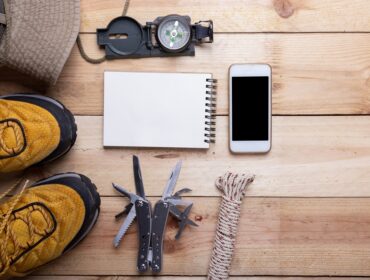Damp or snowy ground is the perfect medium for passing animals to leave evidence of their travels, which means this is a perfect time of year to brush up on your animal track identification skills. Learning some anatomical basics can help you differentiate a bunny from a badger or a deer from a moose as you hike along your favorite trail. Here are just a few animals that you can easily identify by their tracks.
Rabbit
Rabbit tracks will feature two longer rear feet and two smaller front paws. Their tracks leave something of a rectangular pattern. The front feet are most often situated vertically, one behind the other, while the rear feet are side by side. Rabbits have small, round toes.
Squirrel
Squirrel tracks appear in a wider block pattern than those of rabbits. They have five long toes on their rear feet and four on their front feet, and can look something like tiny human handprints. If the tracks you’re seeing have five toes on both the front and the rear feet, then you are probably on the trail of a raccoon or a weasel. The weasel family includes badgers (not the friendliest creatures in the forest) and skunks, so it might be best to avoid following after any five-toed creatures unless you’re positive you know what it is.
Bear
Bears also have five toes on each paw, with long claws. Their footprints are large and somewhat rounded. Black bears have a large heel pad on their rear feet.
Canines and Felines
Dogs and cats, along with their wilder relatives like coyotes, wolves, bobcats, and lynx, have four toes on each foot. Their footprints are more rounded, with the toe pads clearly outlined.
Cloven Hooves
Deer and other two-toed animals like elk and moose leave a somewhat heart shaped hoofprint behind.
You can frequently tell which direction the animal is moving by looking for claw marks. These are not always visible, so in the case of snowy ground, the snow will be pushed back away from the rear of the feet. Both rabbits and squirrels jump and bound along the ground, with the tracks of their back feet landing in front of their forefeet. This may, at first glance, make it look like they are moving in the opposite direction than they actually are.
A couple of things to remember when identifying animal tracks:
- Most animals don’t like surprises. While something like a deer may simply startle and scamper away, a moose or a bear may charge right at you.
- When hiking in areas where bears are known to live, be noisy when moving along the trail. They will move on rather than wait around for you to arrive.
Featured Image from Meg Jerrard/Unsplash




